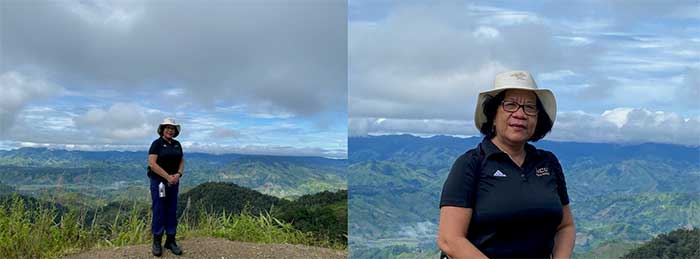
A Department of Science and Technology (DOST) Balik Scientist engaged by Central Mindanao University (CMU) is developing a way to address the growing concern of fatty liver disease in the country.
There is a high incidence of fatty liver disease due to diabetes and obesity in the world, including the Philippines.
The focus of the DOST Balik Scientist Program (BSP) engagement of Dr. Ann Villalobos is more on Non-Alcoholic Fatty Liver Disease (NAFLD), which is considered the most prevalent chronic liver disease worldwide.
“The Balik Scientist Program enables us to advance our research for the unmet medical needs of Filipinos like the non-alcoholic fatty liver disease…Through the expertise of Balik Scientists, we can ensure the health of our countrymen and optimize the use and management of medicinal plants.” said DOST Secretary Renato U. Solidum, Jr.
According to DOST Balik Scientist Dr. Villalobos, there is no medicine for NAFLD and its global prevalence is increasing because of the popularity of the Western diet.
The incidence is calculated to be 32%, 40% male and 26% female among adults in 2024.
In the Philippines, the prevalence of NAFLD was 19.3% based on a 2018 study and is increasing due to our adoption of Western diet.
NAFLD remains to be a major unmet medical/clinical need not only for Filipinos but for the world.
Thus, novel pharmacological entities against NAFLD are urgently needed.
NAFLD, a metabolic disease initially involves the intracellular accumulation of lipids in the cytoplasm of liver cells.
The excess lipids are then stored as triglycerides and cholesterol esters as lipid droplets (LD). LD is the reservoir and provides a buffer during times of energy deprivation. It is then appropriate to target to inhibit LD accumulation by suppressing fatty acid uptake.
To approach this mechanism of NAFLD, plant extracts from medicinal indigenous plants in Mindanao can be a target for high throughput screening (HTS). This natural product can be a source of drug entities or its optimized form for interactions with biomolecules for discovering drugs and diagnostics against NAFLD.
There are validated HTS and Global Natural Products Social Molecular (GPNS) platforms that are routinely employed in CMU’s partner laboratories: fatty liver disease, bladder cancer, and emerging infectious diseases.
Further screening would include simple separation processes to identify the active fractions, confirming components of active and non-active fractions by Liquid Chromatography with tandem mass spectrometry (LC/MS/MS), molecular networking analysis, establishing the library, and completing the screening, using tandem mass spectrometry.
“It is important to do high throughput screening (HTS) of plant extracts from a collection of indigenous plant from Mindanao by the Center for Biodiversity Research and Extension in Mindanao (CEBREM) in Central Mindanao University (CMU), Musuan, Bukidnon. Many of these indigenous plants are considered “go to” medicine by the indigenous peoples of Mindanao,” related Dr. Villalobos.
Business Development is applied early on in the drug discovery stage. Only extracts/fractions with very promising bioactivity and characterization, identification, and mechanism of action results will be considered and elevated for development.
In short, only those deemed to withstand the rigor of the development process will be considered for moving forward in this development program.






















